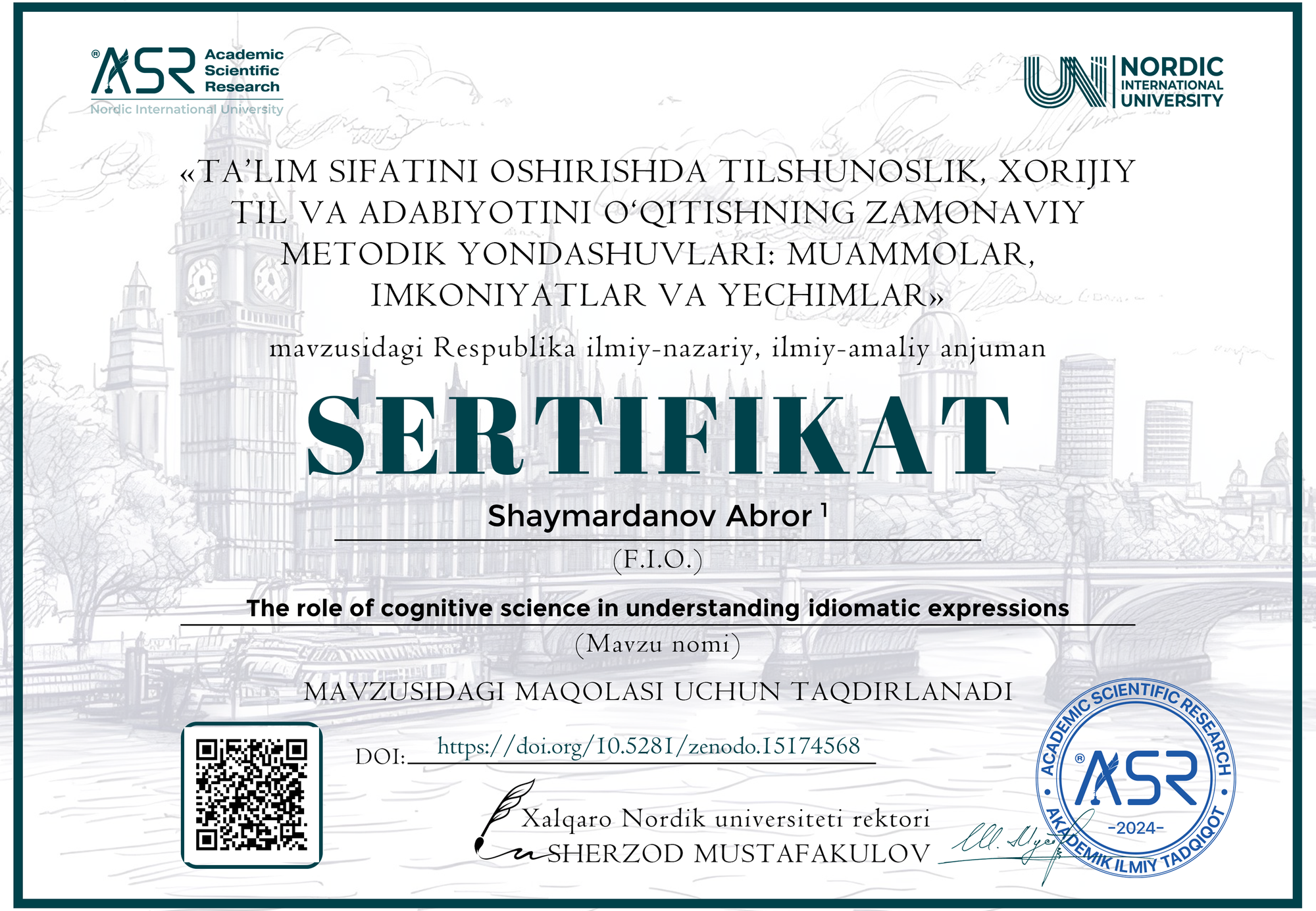Shaymardanov Abror 1

DOI: https://doi.org/10.5281/zenodo.15174568
Google scholar: https://scholar.google.com/scholar?hl=ru&as_sdt=0%2C5&q=%22THE+ROLE+OF+COGNITIVE+SCIENCE+IN+UNDERSTANDING+IDIOMATIC+EXPRESSIONS%22&btnG=
Zenodo community: https://zenodo.org/records/15174568
Nordic_press journal: https://research.nordicuniversity.org/index.php/nordic/article/view/2263
MAQOLANI YUKLAB OLISH
SERTIFIKATNI YUKLAB OLISH
REVIEW:
Abror Shaymardanov's article offers a well-researched and insightful contribution to the interdisciplinary study of idioms through the lens of cognitive science. The paper effectively bridges linguistics, cultural studies, and education to explore how idiomatic expressions function within English, emphasizing both their metaphorical-cognitive structure and cultural foundations.
Strengths:
Cognitive Perspective:
The author presents a compelling cognitive interpretation of idioms, underlining their conceptual grounding in image schemas such as containment, motion, and balance. This approach goes beyond traditional structural views, enhancing the understanding of idiom motivation and processing.Cultural Contextualization:
The discussion of idioms as cultural artifacts is rich and informative. The author traces idiomatic meanings to their historical, societal, and literary origins, revealing the cultural depth embedded in expressions like “spill the beans” or “to keep one’s nose clean.”Pedagogical Application:
The paper outlines effective teaching methods including conceptual integration, comparative translation, storytelling, and multimedia tools. These approaches are grounded in both theory and practice, making the article valuable for educators and curriculum designers.Structure and Clarity:
The article is clearly organized, with distinct sections for cognitive frameworks, cultural significance, teaching strategies, and conclusion. The language is academic, yet accessible, with strong coherence throughout.Use of Scholarly References:
The paper is well-supported by recent and relevant academic sources, including international publications that enhance the paper’s reliability and scope.Suggestions for Improvement:
Visual Aids: Incorporating comparative tables (e.g., idioms in English vs. learners' native languages) would aid in visualizing linguistic contrasts and enhance clarity.
Extended Examples: More detailed discourse samples or case studies of idiom usage in learner contexts could enrich the pedagogical section.
Further Empirical Data: Inclusion of brief classroom experiment results or learner responses would add empirical weight to the recommendations.
Conclusion and Recommendation:
This article makes a significant academic and practical contribution to the understanding and teaching of English idioms. Its integration of cognitive linguistics, cultural interpretation, and instructional strategies presents a holistic view that is useful for both scholars and educators. It is a timely and relevant work in the fields of applied linguistics and language pedagogy.



